The Carian language
One could use with caution the phrase - “Barbarians” in a Greek disguise - to give a quick description of the ancient nation known as the Carians. Did you know that many famous Greeks were actually of Carian origin? The “father of history”, Herodotus was half Carian from his fathers side, who was called Lyxes or Lỳkse in native Carian. Cleoboulos the Philosopher, one of the seven sages of Greece, was a Carian from the city of Lindos, who has been attributed one of the wisest and most classical sayings ever “Moderation is the best thing”; a phrase that became a trademark of Greek culture. Thales the Miletian, one of the greatest philosophers and by many entitled the “father of science”, was also Carian. Maybe you're also familiar with Mausolos, whose burial chamber “the Mausoleum”, became one of the seven wonders of the world. The wealthiest person in history of mankind and King of Lydia, Croesus, was half Carian. It appears in the end, that the Carians were much more than their relatively poor fame.Origins of the Carians
Even though Carians are mentioned frequently in ancient literature, most things about them remained a mystery. Until the 80's, when the Carian writing was finally deciphered, we knew nothing about the nature of their language. Carians were labelled as anything except Indo-Europeans. What we know now, is that the Carian language belonged to the Luwic group of Indo-European Anatolian languages together with Lycian Ignacio J. Adiego, The Carian Language, Leiden 2007. However, most ancient authors place the Carians originally in Hellenic lands.
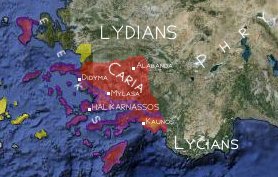 In search of their pre-history, it would be, once again, wise to trust Herodotus, who was half-Carian by blood. He reports the Cretan account, where the Carians dwell in the Aegean islands and are subjects to the “Minoan” King Minos.
They do not pay any tribute, but they supply the Cretans with ships and seamen when needed. By their campaigns with Minos, they became famous as mercenaries and in fact the name “Carian” became almost synonymous with “mercenary” It is worth mentioning the Greek saying “ἐν τῷ Καρὶ κινδυνεύειν” meaning “to run the risk with a Carian”..
At this point of time, the Carians are known as Leleges, a name which has been very confusing for historians.
In fact, Leleges are a group of people who posse on some accounts as Carians and on other accounts as a distinct nation, closely related to the Carians In most cases, ancient writers use the ethonym as synonymous to Carian..
With the Ionian and Dorian advance to the islands, the Carians end up in the mainland. On the other hand, according to Herodotus again, the Carians wanted to pose as natives of Caria.
They said that Lydos and Mysos, fathers of the Lydian and Mysian nation respectively, were brothers of their founding father Car. Herodotus believes however, that the natives of Caria, were the Kaunians, a nation that adopted the Carian language (or Carians adopted the Kaunian). The Kaunians on their turn claimed to have come from Crete. That was the case for the Lycians too; Herodotus tells us that they came from Crete, after have been expelled by Minos.
In search of their pre-history, it would be, once again, wise to trust Herodotus, who was half-Carian by blood. He reports the Cretan account, where the Carians dwell in the Aegean islands and are subjects to the “Minoan” King Minos.
They do not pay any tribute, but they supply the Cretans with ships and seamen when needed. By their campaigns with Minos, they became famous as mercenaries and in fact the name “Carian” became almost synonymous with “mercenary” It is worth mentioning the Greek saying “ἐν τῷ Καρὶ κινδυνεύειν” meaning “to run the risk with a Carian”..
At this point of time, the Carians are known as Leleges, a name which has been very confusing for historians.
In fact, Leleges are a group of people who posse on some accounts as Carians and on other accounts as a distinct nation, closely related to the Carians In most cases, ancient writers use the ethonym as synonymous to Carian..
With the Ionian and Dorian advance to the islands, the Carians end up in the mainland. On the other hand, according to Herodotus again, the Carians wanted to pose as natives of Caria.
They said that Lydos and Mysos, fathers of the Lydian and Mysian nation respectively, were brothers of their founding father Car. Herodotus believes however, that the natives of Caria, were the Kaunians, a nation that adopted the Carian language (or Carians adopted the Kaunian). The Kaunians on their turn claimed to have come from Crete. That was the case for the Lycians too; Herodotus tells us that they came from Crete, after have been expelled by Minos.
This is were the genealogy of the Carians become complicated. If we have to go by the Carian account, then how come their founding father Car becomes King of Megara Pausanias – Description of Greece 1.39.5. In 1.40.6 Pausanias reports that Car named the land Caria. in the Hellenic mainland? How can the Mysians, who seem to have been speaking a very different language from Carian Athenaeus (Book IX) reports a similarity of Mysian and Paeonian. Also, the native Mysian inscription of Uyujik, Turkey is rather close to Phrygian (if not a dialect of it) and Greek, rather to Carian., be related to them? Why are not the Lycians and Caunians included in the Carian genealogy? The fact of being continuously driven out from their lands, might have created the “urge for an autochthonous origin”. The truth is that their relation to the Greeks must have passed through many “love and hate” situations. The first Ionians that settled in Caria did not bring women with them, but married with the local Carian women. That means that the populations of the Carian coast was initially mixed and the later waves of Greeks must have caused an early Hellenization Strabo mentions that the interior between Ephesus and Antioch is inhabited by Lydians and Carians mixed with Greeks. On the Carian language he notes that it is not harsh and that it contains many Greeks words mixed up with it. of the Carian populations, without however wiping out language and identity. Indeed, archaeologically speaking, their culture appears as little more than a reflection of contemporary Greek culture See Cook 1959-1960, p. 50 under Caria. Also Cambridge Ancient History III, part 2 - The Assyrian and Babylonian Empires and other States of the Near East, from the Eighth to the Sixth Centuries B.C, p. 664. and there's a serious lack of bronze age finds in Caria, other than those of Mycenaean and Minoan type. More or less, Carians must have been existing as a nation within a nation and came to some form of symbiosis with the Greeks. As Strabo puts it “they were unable to live apart from the Greeks” Strabo 14.2.28.
Now, If the Greek writers were indeed right about the migration of the Carians to the coast of Asia Minor, when did this occur? In the other side of the Aegean lies the answer. The land of Karkisa as it is called in the Hittite records might be Caria of the 14th century BC. Taking into consideration the Carian ethnonym “KRK” and “ krka” used by the Phoenicians and the Persians respectively, then the chances of Karkisa being Caria are high.
The Carian language and alphabet
Carian belongs to the Indo-European family of Anatolian languages, together with Hittite, Cuneiform and Hieroglyphic Luwian, Palaic, Lycian, Lydian, Sidetic and Pisidian. More precisely, it forms part of the so-called ‘Luwic’ group of Anatolian languages. This classification of Carian has already been proposed by several scholars—notably V. V. Sevoroskin—on the basis of indirect documentation affirmed in Classical sources, mostly Carian proper names that showed strong connections with Anatolian. But this is now clearly confirmed by direct sources, now that the Carian alphabet has been deciphered, and decisive linguistic evidence has been obtained from Carian texts See Ignacio J. Adiego, The Carian Language, Leiden 2007.
Despite its certain classification, Carian is a poorly attested language. Most of the Carian inscriptions were produced outside Caria (e.g in Egypt) and are mostly graffiti with laconic context (e.g the name of the amanuensis). That leaves us with a glossary that is mainly composed of personal names. Longer Carian texts have been found in Greece and Turkey, but we need many more in order to claim a good understanding of the language.
The most weird and difficult part of Carian is its alphabet. It looks more or less like a Greek derived alphabet, but in reality any knowledge of Greek reading would be of no real value in Carian. For example consider the following hypothetical letter sequence MARIA The name Maria does not exist in Carian, but is simply a sample used to demonstrate the absurdity of the Carian letter values., which is read as SAŠLDA i n Carian. The letter values have nothing to do with Greek and therefore the first attempts to read Carian as Greek, made it almost unpronounceable. A second attempt to read Carian as a semisyllabic alphabet gave no light either. It was not until the Egyptiologist John D. Ray used Carian-Egyptian bilinguals to assign new values to this “Greek”-like alphabet, the Carian language was deciphered. However, our understanding of how to read Carian is still not clear. For example the Carian personal name ßrsis is actually read as Imbrasis, while the name pñmnn is read as Ponmoonnos. We know how to read those names because they appear in Greek inscriptions, otherwise it would be hard to guess how they were read by the Carians. In many cases in Carian, biphonemic sequences are written with one grapheme e.g the Carian λ corresponds Greek -λλ\-λδ Carian paruśoλ is rendered in Greek as Παρυσσωλδος. and the Carian q corresponds the Greek κυ or κο Carian qtblemś is rendered in Greek as Κυτβελήμις..
A summary of the Carian phonology can be seen in the table below See also H. Craig Melchert's "Carian" in Ancient Languages of Asia Minor, Cambridge University Press 2008:
|
Consonants |
Obstruents
Sonorants
It is certain that Carian sonorants have syllabic allophones. |
|
Vowels |
Diphthongs /ai/ and /au/ seem assured. |
The Carian “Uralphabet” as presented by I. J. Adiego 2007.
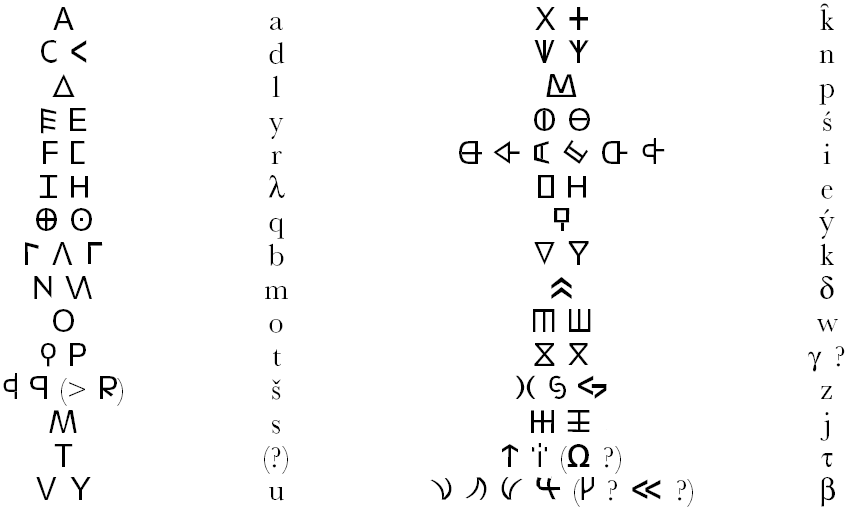
Sample glossary
Below you will find some Carian words and their relation to other Indo-European languages.| Carian | Meaning | Comments |
|---|---|---|
|
ala |
horse |
Persian “asa”, Skt. “asva”, Lith. arklys |
|
en |
mother |
Hittite “anna”, Lycian “ene”, Lydian “ena” 15 |
|
esa- |
with |
Lycian “ese” |
|
para- |
forth |
Hittite “para”, Greek “para”, Skt. “para”. |
|
qan |
dog |
Lydian “kan”, Phrygian “kunes” (pl.), Greek “kuon” |
|
quq |
personal name, grandfather |
Lycian “xuga”, C.Luwian “huha” |
|
san |
this |
Armenian “sa”, H. Luwian “ za”, Phrygian “semoun”, Lithuanian “sitas” |
|
sb |
and |
Milyan “sebe”, Lycian “se” |
|
ted |
father |
Lydian “taada” |
|
tousulloi |
dwarfs, pigmies |
Greek “tossichos”, “tosodulis” |
|
tumnia |
stick |
Greek “tumnia” |
What were the Carians writing?
Carian inscriptions are rarely long texts and in most cases they are graffito where the inscribers name appear. Below you will find some Carian texts translated in English.
Carian: šrquq | qtblemś | ybt | snn | orkn | ntro | pjdl
English: šrquq (son) of Qutbelemis dedicated this bowl to Apollo
Carian: [--]ryin | k̂ tmñoś | sb | ada | k̂ tmnoś
English: [--]ryin of Hekatomnos and Ada of Hekatomnos
Carian: irow | pikraś k̂i semwś | mnoś mwdonś k̂i
English: Irou, (husband) of Pikra, the son of Semw, the mwdon-
Quotes about the Carians
Herodotus - 5th century BC- The Carians are a race who came into the mainland from the islands. In ancient times they were subjects of king Minos, and went by the name of Leleges, dwelling among the isles, and, so far as I have been able to push my inquiries, never liable to give tribute to any man. They served on board the ships of king Minos whenever he required; and thus, as he was a great conqueror and prospered in his wars, the Carians were in his day the most famous by far of all the nations of the earth. They likewise were the inventors of three things, the use of which was borrowed from them by the Greeks; they were the first to fasten crests on helmets and to put devices on shields, and they also invented handles for shields. In the earlier times shields were without handles, and their wearers managed them by the aid of a leathern thong, by which they were slung round the neck and left shoulder. Long after the time of Minos, the Carians were driven from the islands by the Ionians and Dorians, and so settled upon the mainland. The above is the account which the Cretans give of the Carians: the Carians themselves say very differently.
- The Caunians, in my judgment, are aboriginals; but by their own account they came from Crete. In their language, either they have approximated to the Carians, or the Carians to them.
- Even those who came from the Prytaneum of Athens, and reckon themselves the purest Ionians of all, brought no wives with them to the new country, but married Carian girls, whose fathers they had slain.
- To the Ionians and Carians who had lent him their assistance Psammetichus assigned as abodes two places opposite to each other, one on either side of the Nile, which received the name of 'the Camps'. He also made good all the splendid promises by which he had gained their support; and further, he intrusted to their care certain Egyptian children whom they were to teach the language of the Greeks.
Thucydides - 5th century BC
- Indeed, they could not unite for this expedition till they had gained increased familiarity with the sea. And the first person known to us by tradition as having established a navy is Minos. He made himself master of what is now called the Hellenic sea, and ruled over the Cyclades, into most of which he sent the first colonies, expelling the Carians and appointing his own sons governors; and thus did his best to put down piracy in those waters, a necessary step to secure the revenues for his own use.
- During the purification of Delos by Athens in this war all the graves in the island were taken up, and it was found that above half their inmates were Carians: they were identified by the fashion of the arms buried with them, and by the method of interment, which was the same as the Carians still follow.
Strabo - 1st century BC
- Of the numerous accounts of the Carians, the one that is generally agreed upon is this, that the Carians were subject to the rule of Minos, being called Leleges at that time, and lived in the islands; then, having migrated to the mainland, they took possession of much of the coast and of the interior, taking it away from its previous possessors, who for the most part were Leleges and Pelasgians.
- The city of Ephesus was inhabited both by Carians and by Leleges, but Androclus drove them out and settled the most of those who had come with him round the Athenaeum and the Hypelaeus, though he also included a part of the country situated on the slopes of Mt. Coressus. It is said that they [the Caunians] speak the same language as the Carians, but that they came from Crete and follow usages of their own.
- Neither is he correct when he says that the language of the Carians is very harsh, for it is not, but even has very many Greek words mixed up with it.
- Now these temples belong peculiarly to the city; but there is a third temple, that of the Carian Zeus, which is a common possession of all Carians, and in which, as brothers, both Lydians and Mysians have a share.
Pausanias - 2nd century AD
- The inhabitants of the land [Ephesus] were partly Leleges, a branch of the Carians, but the greater number were Lydians.
- The first Greeks to arrive were Cretans under Rhacius, who was followed by a great crowd also; these occupied the shore and were strong in ships, but the greater part of the country continued in the possession of the Carians.
- The Carians, the former inhabitants of the land, united with the Cretans.
- The Ionians who settled at Myus and Priene, they too took the cities from Carians.
- The Erythraeans say that they came originally from Crete with Erythrus the son of Rhadamanthus, and that this Erythrus was the founder of their city. Along with the Cretans there dwelt in the city Lycians, Carians and Pamphylians; Lycians because of their kinship with the Cretans, as they came of old from Crete, having fled along with Sarpedon; Carians because of their ancient friendship with Minos; Pamphylians because they too belong to the Greek race, being among those who after the taking of Troy wandered with Calchas.
Gallery
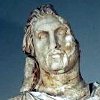
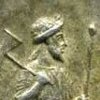
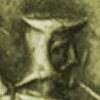
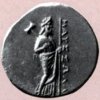

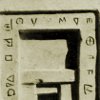
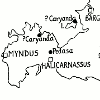
Tags: Carian, Kaunian, Carian language, Carians, Leleges, Anatolia, Asia Minor, Turkey, Aegean, Greece, Egypt, Carian Alphabet, Anatolian languages, Luwian